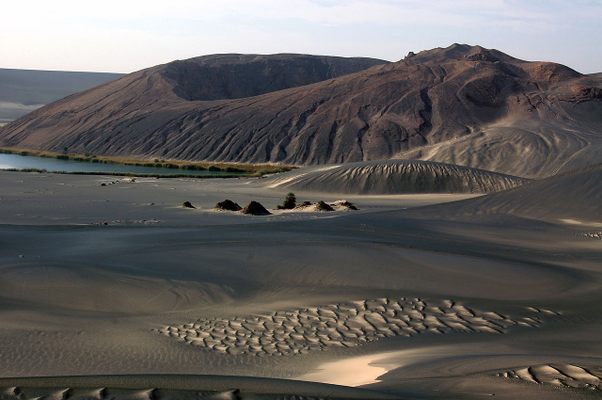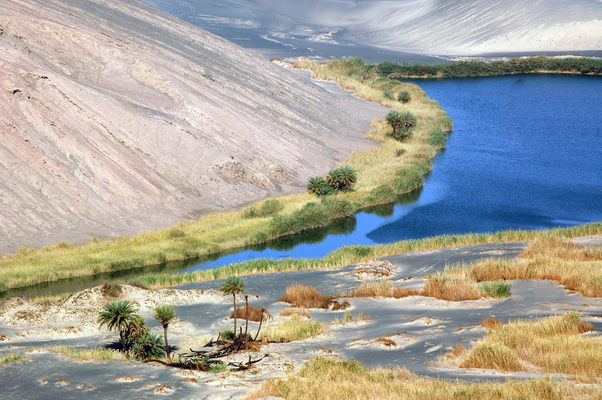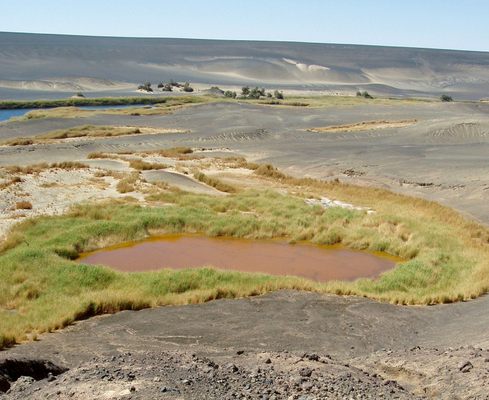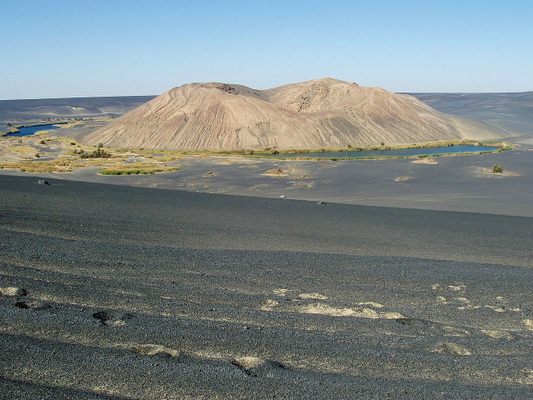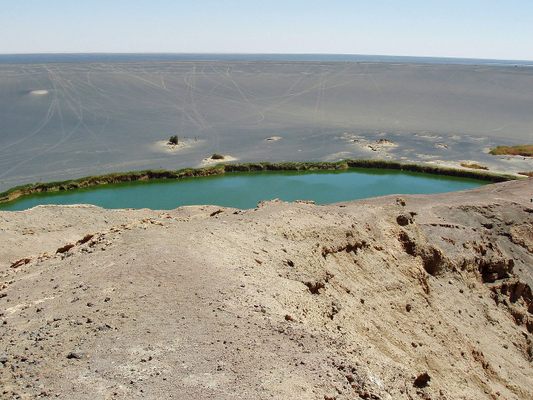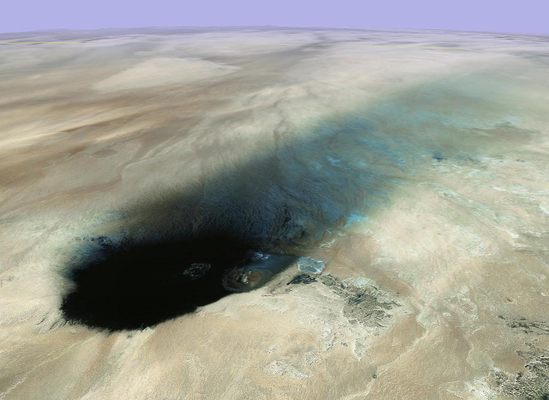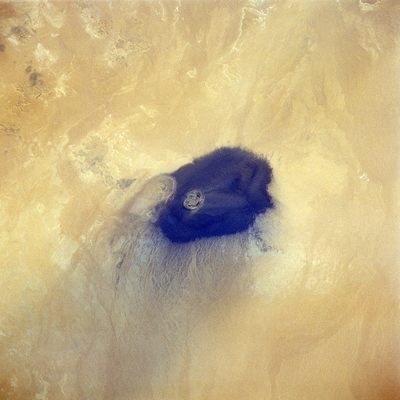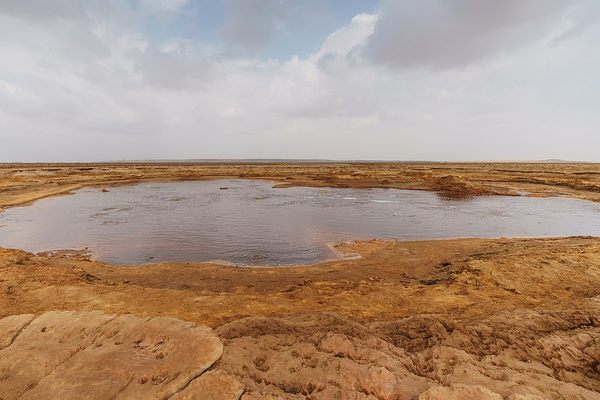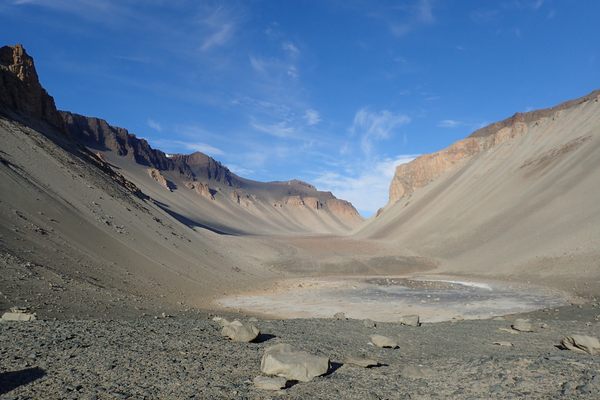About
“Seen from space, few other dormant volcanoes look as exotic and spectacular as Waw an Namus,” says NASA’s Earth Observatory. From high above, the volcano is clear to see in the Sahara. It's surrounded by a smudge of dark basaltic ash and tephra, which extends between six and 12 miles around the central caldera in stark contrast to the surrounding desert. And inside the caldera lie three glinting lakes surrounded by flecks of green.
Approaching by foot, visitors to this remote location first walk through the moonscape of the ash and tephra. At the heart of this peculiar landscape is the two-mile-wide, 330-feet-deep caldera, with a 460-feet-high post-caldera scoria cone near its center. Once at the caldera rim, a strange sight awaits: three lakes, and a few smaller bodies of water, lie on the floor of the caldera, surrounded by palms, reeds, and swamp vegetation.
Much of the water within the caldera is warm and saline, but some bodies of freshwater do exist. Waw an Namus, therefore, has long been an important stop for caravans traveling across this otherwise parched and isolated part of the Sahara.
But Waw an Namus isn’t the most inviting of campgrounds for one particular reason: mosquitoes, and lots of them. The name itself translates to “Crater of Mosquitos,” and visitors are well-advised to camp outside the caldera unless they are well prepared with mosquito nets and a serious supply of repellent. The mosquitoes of Waw an Namus don’t often have the chance to feed on fresh blood, so when they do, they don’t hold back.
Questions remain regarding the formation of Waw an Namus. Volcanism in the Sahara isn’t fully understood and various theories exist to explain the presence of volcanoes like Waw an Namus. Its age, too, is open to debate. The central cone looks relatively young, suggesting it may have been formed as recently as a few thousand years ago. The arid climate of the region, however, may be masking the volcano’s true age.
Related Tags
Know Before You Go
Waw an Namus is located in the Sahara desert of south-central Libya, to the south of the Haruj volcanic field. It lies about 250 miles southeast of the oasis city of Sabha. Due to its remote location and the ongoing Libyan Civil War, few people actually visit Waw an Namus despite its reputation as one of the most beautiful and fascinating natural attractions in the country. Tours can be arranged in the larger cities, but it’s worth doing some thorough research before choosing a company.
Community Contributors
Added By
Published
September 16, 2019
Sources
- https://volcano.si.edu/volcano.cfm?vn=225008
- https://www.amusingplanet.com/2013/09/waw-namus-oasis-in-volcanic-crater.html
- https://www.pandotrip.com/waw-an-namus-an-ethereal-volcanic-oasis-in-the-sahara-libya-17745/
- https://www.temehu.com/Cities_sites/wawnamos.htm
- https://earthobservatory.nasa.gov/images/86054/desert-contrast
- https://www.libyaobserver.ly/culture/waw-namus-piece-moon-libya%E2%80%99s-desert
